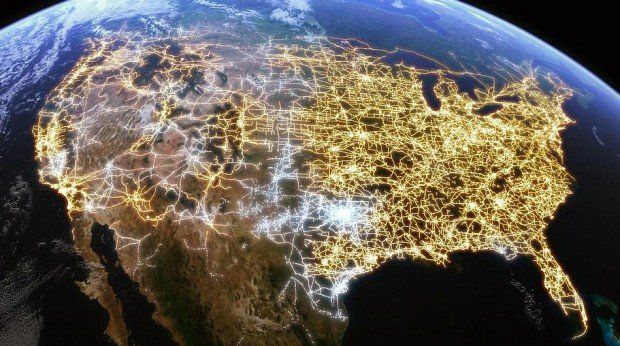The browser you are using is not supported. Please consider using a modern browser.

Renewable Energy and the Energy Demand Gap
The 21st Century Energy Challenge
Filling the gap between energy supply and demand with renewable energies poses major challenge facing the increasingly industrialized globe. Currently, most of the US is powered by traditional fossil fuels. In 2017, the US consumed 97.7 quadrillion British thermal units worth of energy, 38.1% of which consisted of electric power consumption.
Estimating Energy Demand
The gas and oil industry has always faced difficulty with forecasting market demand, and recent changes in availability and public concern for fossil fuel combustion make it even more difficult to predict future energy demand. Many experts in the industry predict there will be demand for only low cost gas and oil in years to come.
The US is experiencing a move towards “electrification”. This means an increase in dependency on the use of electricity. However, there isn’t a consensus among publications on which direction the electricity demand is moving- or not moving. Recent studies on growing electrification show a predictive steady upward trend in total US electricity generation. On the contrary, the US Energy Information Administration (EIA) predicts that the overall electricity use in the US will stay where is has been for many years to come.
Why Renewables?
The push for alternative energy use comes primarily from environmental concerns regarding the use of fossil fuels, as well as the realistic limitations of fossil resources. Since the 1950s, when commercial drilling first began, 135 billion tons of crude oil have been used. There is growing worry regarding the continued reliance on hydrocarbons as the world’s primary energy source. A major problem for the oil industry involves disclosing and managing risk. Risk includes not only technology risk and the risk of obtaining fuel, but risk for investors as well.
The interest and worry over global warming cannot be ignored when evaluating the energy industry and viability of clean power sources that do not affect carbon dioxide levels. The past several decades of scientific research on the effects of fossil fuel burning have lead to many publications outlining a ccarbon budget: the amount of carbon dioxide emissions over a period of time that will keep the earth’s temperature below a certain degree. The concept of nonburnable carbon, which emerged at the beginning of this decade, refers to fossil fuel sources that cannot be converted to energy without exceeding the carbon budget. Nonburnable coal and other fossil fuels could account for $30 trillion of unusable resources this year.
Economically, the price of renewable power sources has been decreasing each year. But, the price of traditional oil and gas has been increasing. The price of non-renewable sources of energy, obtained from natural gas-fired power plants, is projected to rise. In addition to higher government standards for energy efficiency, which increased beginning in the 1990s, there are also government incentives for purchasing and utilizing renewable energy sources. Increase in government support for use of renewables includes tax credit incentives at both the federal and state levels. Increases in government standards include improved building construction standards and regulations that promote energy conservation.
In 2014, the Energy Information Administration (EIA) reported that with the exception of within the Northeast, fewer households in the US were choosing natural gas to heat their homes. Instead, people are choosing electric heat pumps to keep their families warm. For those living in cooler climates, the existence of fully electrified homes is becoming increasingly more common.
Filling the Energy supply-demand gap with renewable sources
The Energy Information Administration (EIA) estimating that 23% of global energy use in 2015 came from renewable sources. In 2017, the US saw an increase in renewable energy use, which now represents 18% of all power usage in the country, continuing an upward trend that is picking up speed each year. The number of cities around the world powered entirely on clean energies is expected to continue to grow annually. Many cities have pledged to become 100% renewable, including some in the US. Wind and solar power made up 62% of new power construction in the US in 2017, and the cost of both are gradually dropping. The number of residential solar panels has been steadily increasing, and actually doubled in 2016 alone.
The largest metropolitan area in the US committed to clean energy is San Diego, which has pledged to rely entirely on renewable sources by the year 2035. The state of Hawaii, which was once the most fuel-dependent state in the US, has committed to being 100% renewable by the year 2045, by tapping into geothermal, wind, solar, biomass, and ocean energy sources.
One of the most widely used forms of renewable energies is wind power, which is currently the fastest growing electricity resource in the world. Cost of installation of turbine plants has decreased significantly in recent years. With increase in demand comes an increase in jobs, with about 275,000 wind sector related jobs added 275,000 wind sector related jobs added from 2012-2017.
Due to surging global interest in addressing climate change and reduction in dependency on combustion of fossil fuels, the energy market is shifting its focus increasingly towards renewables. It is likely that the energy industry is facing decades of transformation, but how exactly the 21st century energy challenge will play out is hard to predict.
